The making of... Dishonored
At times, the black mirror of 17–19th century London that is Dunwall can feel like a living dissertation made by a team with an intense love of history. Not when you’re blade deep in an aristocrat’s gullet or possessing a monstrous rat, of course, but in nods to the Age of Enlightenment and the history of science that leap from the game’s text logs and hand-painted textures. The effects of the new whale-oil technology upon which the treacherous Lord Regent builds his regime offer some parallels to the historical discourse on God, magic and science. Science had a different name back in the time of the Great Fire, however, and accordingly each of Dishonored’s mechanical marvels is a product of the Dunwall Academy Of Natural Philosophy, where learned men concoct plague cures for the elite.
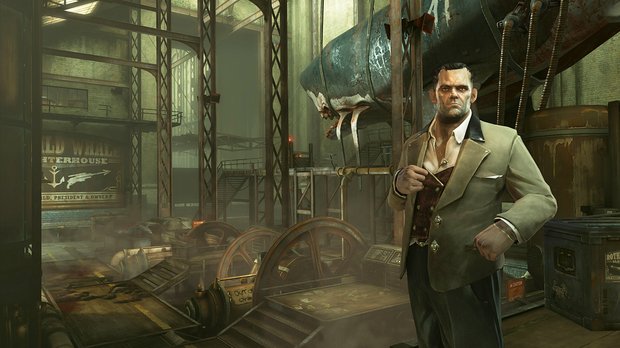
According to Arkane Studios co-creative director Harvey Smith, though, a history lesson was never the intention. What appears to be a considered subtext is really just a byproduct of how Arkane conceives its worlds: with a thorough bibliography. “I think a mistake some developers make is that they just look at what’s in games and they try to reproduce it,” says Smith. “We try to go back to the source. We go back to historical references and ask, ‘Why did this happen? What faction was pushing for it, and what was the cultural attitude of the time?’ And then we build up from there.”
Knowing what to build on was the first problem, though Arkane knew it didn’t want to follow the crowd. From art director Sébastien Mitton’s first sketches of 17th-century London and the nebulous sense that this was to be a fantasy game arose the steel and brick of Dunwall, a Victorian-esque industrial city with steampunk trim, joined by the player as its empire begins to rot from within, as much a product of politics as the virulent Rat Plague.
Arkane harvested the history of London’s darkest days and made something still bleaker. ”There’s this nice period of the 1830s to the 1860s that was not something done in a lot of games,” Smith says, “and so the more we read references like Limehouse Nights and [looked at] the artwork of the time, the more excited we were – it was organically finding the passion.”
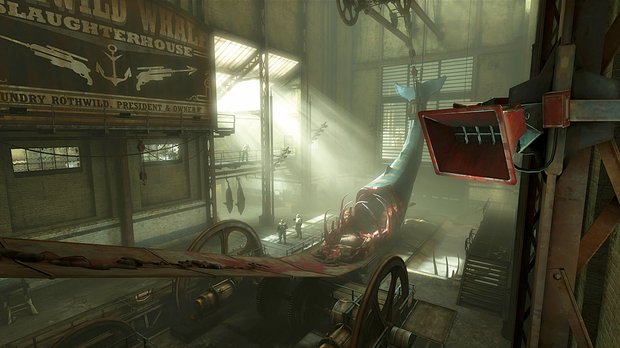
Smith’s words conjure images of leisurely fact-finding, indulging variously in the history of architecture, fashion, weaponry and medicine. Indeed, a full year was invested in establishing a solid historical and artistic base. In 2009, when Dishonored was first pitched, however, time was a luxury. In recognition of Arkane’s talent with RPGs and the strength of its art team (at the time Mitton, an artist on BioShock 2 and Dark Messiah: Might And Magic, was paired with Viktor Antonov, the man who famously conceptualised Half-Life 2’s City 17), Zenimax had approached the studio with an offer of backing. Then the two games that Arkane was working on collapsed. Suddenly, it was in desperate need of a project.
“We thought, ‘Well, we’re screwed. Now Bethesda’s not going to want to work with us,’” Smith says. “And they surprised us by saying, ‘No, we wanted to work with you guys because you’re you guys! You can pitch something original, or we have this old ninja game concept that no one has ever developed.’ It was classic feudal Japan: sorcerous powers and weapons and poison darts, and someone had killed your master and you were a ninja seeking revenge.
“We pitched a counter proposal. We came back with, ‘What if it was London and 1666, the last year of the plague, the year of the Great Fire?’ And, to our surprise, they said, ‘That sounds just as cool, and you sound more passionate about it. Go, go, go!’”
Sign up to the GamesRadar+ Newsletter
Weekly digests, tales from the communities you love, and more
At the time, the proposed design would have made many publishers quail, but Bethesda didn’t baulk at the prospect of extensive stealth, remaining wilfully deaf to the trends set by Assassin’s Creed. Nor did the publisher flinch as Smith and fellow co-creative director Raphael Colantonio began building in option upon option: the lethal and nonlethal eliminations and varied methods of approaching targets that came to define Dishonored, dictating which of its three endings you might see. Zenimax wholly acquired Arkane in 2010, and Bethesda executive producer and game director Todd Howard encouraged the team to experiment right up to deadline. Arkane would work in passes, refining its ideas iteratively.
“Step one was having an idea,” Smith says. “Step two was making a list, even if it’s a weak list. Step three was then improving the list. One of the nonlethal eliminations was something like paying some criminal lord to abduct a guy and hold him in a cell for one year and then release him unharmed. That was an idea on the list. Instead, one of our guys was like, ‘What if, as part of the religion, they had this thing called a Heretic’s Brand that if you ever marked anybody with it, [then] no one associated with the religion was even allowed to talk to them?’ We loved it immediately. Instantly, it became a piece of world lore.”
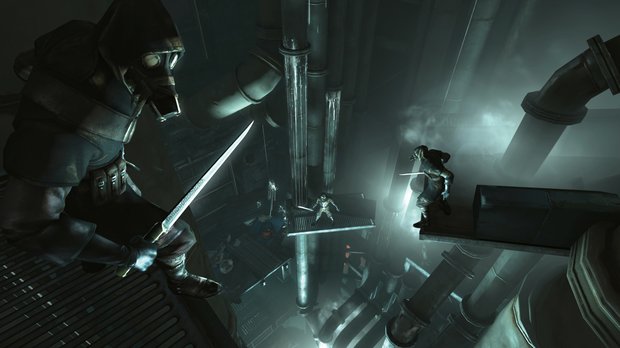
The target in question is High Overseer Campbell, and should you choose to scar him, much later you will find a branded, plague-stricken outcast skulking in the destitute Flooded District. ‘World lore’ in Dishonored means more than audio logs scattered by forgetful citizens (though they exist plentifully): each texture, every fictional brand, the powers at your command and the caricatures you’re dispatched to kill all allude to a larger whole. The assassination of an empress is a footnote alongside the living history of The Isles penned by Smith, Colantonio and external writer Austin Grossman, and brought into being by Arkane’s artists. Dunwall, to which Dishonored and all of its DLC are confined, is one city on one island in one cluster, each with their own customs, cuisine and persons of note, none of which is required to progress the story.
“I think it’s part of our DNA,” Smith tells us. “I started at Origin. Our slogan was, ‘We create worlds.’ I hear our artists say all the time, ‘When I look at this desk or this wall or this street, I want to see the history of it.’ I guess there was a point where we said ‘This is London,’ and suddenly one day we realised, ‘Wow, we’re in an alternate reality.’ I literally mean that: we realised it.”
“At some point, the game had its own wind,” Mitton elaborates. “There was no need to look for reference [any more], because the city was already alive. So we just had to pick up on an idea within this city and create.” Mitton’s initial challenge was to establish an art style that could communicate the history that Smith and Colantonio were creating without fatiguing players. Because Dishonored needed to be more than a walking tour of an alternative-history London. A stealth-combat game set in semi-open environs demands planning, problem solving and no small amount of situational awareness. Telling viable escape routes from set dressing had to be possible on the move.
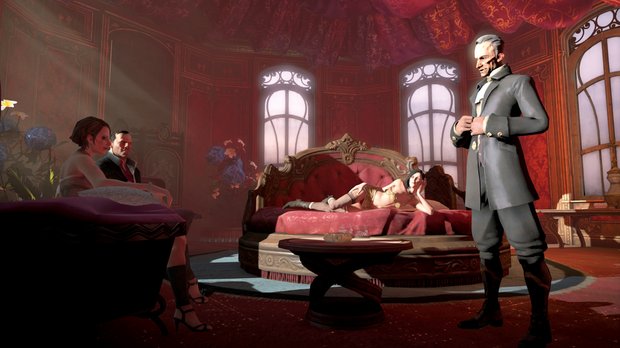
“I have a classical background,” Mitton says. “The aim was to try to make the legibility better than other games, remove all the noise of what they call the ‘hi-res, next-gen’ texture and view it as an illustration or painting. Because in a painting, not everything is drawn the same size – you need a large number of brushes when you paint, and I wanted the player, when he looks at an environment, to be able read it. That forced us to produce textures that were less hi-res than other games, but the gain was the legibility and the cool impressionist aspect of it.”
Smith and Mitton both lament what they see as conservatism among publishers around the turn of the decade. Bethesda, by contrast, asked Arkane two questions: what are you passionate about, and why is it going to excite players? So it’s tempting to see the pastel colours daubed over Dunwall as a rebuke to big-budget games in thrall to browns and greys. Dishonored paints decay in orange, gold and blue without compromising the workhouse austerity that characterises its imposing architecture. Your hub for the vast majority of the game, The Hound Pits pub, is a timeworn structure dressed in collapsed masonry and corrugated iron, but blazes in the sun as it swings into view around a bend in the Wrenhaven river.
“The palette was a result of how we work. It was not on purpose,” Mitton says. “We really tried to balance the values and contrast in the environment. Some other studios use new assets from different vendors and pack them into the level, and then, since it looks scrappy, they need a postprocess that makes it look brown or blue. We don’t do that. When you are in the editor, you can remove the lighting – it’s called unlit mode. If it looks good in unlit, then you switch on your lighting and you can postprocess, but you don’t need postprocessing to correct problems in your visuals.”
"The pressure was so high that when we got the painting of the two Pendletons, it was a big win."
Arkane’s artists and writers came together most passionately in the characters. No Dunwall resident exists solely as a means to progress the story; like Smith’s desk example, each character’s past and motivations are implied through haggard faces and mannerisms. Keen to accentuate Dunwall’s gloomy, weathered Britishness, Arkane went as far as to dispatch members of the art team to Edinburgh to photograph locals.
Even those destined to die by your hand possess suggestions of private lives independent of the narrative, their trysts and treachery revealed only to the outlaw stealing through the attics of high society. Smith asserts that all character and location work was done in parallel, and the payoff is most apparent at the Boyle Estate costume party. Lady Boyle funds the usurper’s government and must therefore be taken out, the only problem being that every attendee is masked. You could mingle, talk to the guests and deduce her identity, or you could infiltrate the upper floors and read her love letters.
Characters’ traits and incongruously American-accented speech, meanwhile, are exaggerated in a style closer to theatre than film. Lord Treavor Pendleton, the parliamentary power behind the conspiracy you’re caught up in, is inscrutably polite, but deeper enquiry reveals a bitter man, at once envious of and tormented by his brothers.
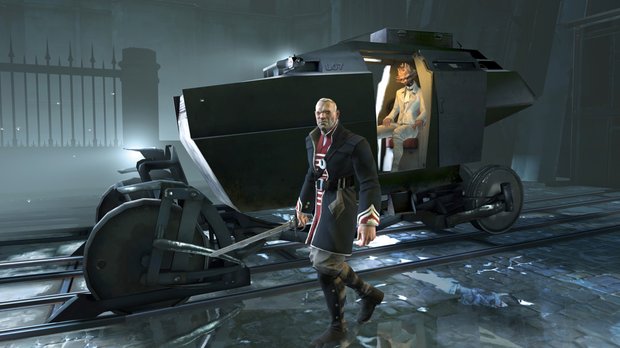
“It’s art and narrative working very closely together,” Smith tells us. “Pendleton we love as a character because he’s just such a privileged, elite, whiny guy. But then when you get to know the character, you know he was bullied by his older brothers and his father, who didn’t see him as a man’s man. He had this kind of snotty tone to his voice that our external writer, Austin Grossman, was just perfect at capturing – his natural voice lends itself not to humour but wit. And then when the artists drew the guy…”
It was far from easy for the art team to capture all that, of course. “You feel the pressure!” Mitton says. “Harvey goes so deep with the notes and the connections between characters and the [story] backbone. The pressure was so high that when we got the painting of the two Pendletons, it was a big win. We fitted, in one still image, the whiny man, his father… it’s really cool.”
Alongside a BAFTA for Best Game, the studio’s accolade haul includes an Edge Game Of The Year Award and a DICE award for Gameplay Engineering. They and numerous other awards are there because the studio realised it wasn’t enough to birth a world if, as playtesting suggested, it was a chore to traverse. The solution – a local teleportation power called Blink – upended perceptions of three-dimensional stealth. It was a stroke inspired by a key figure from the genre’s formative years. “We spent some time hanging out with our friend Doug Church,” Smith says, “who worked on Underworld and Thief and System Shock, and asked, ‘What would you do differently?’ And he said, ‘We really tried to reward the player for going slow on Thief, and I think I would invert that.’”
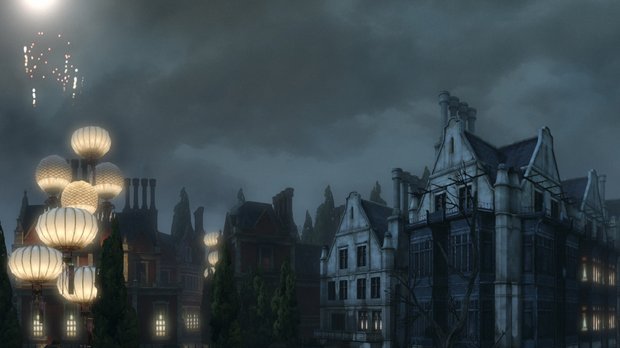
Initially, Blink involved crouching and jumping like a cat on the hunt. Later, it evolved to work on a flat plane, shunting the player in zigzags. Its final incarnation is purer: hold a button, point and release and you’ll snap to wherever the reticle indicates, be that thin air, a ledge or behind an encroaching guard. Stealth becomes balletic, taking on the energy you’d expect of an FPS.
“Near the end of the project, Raf said, ‘What if we gave all players Blink for free?’” Smith explains. “It immediately transformed the game. We went from playtests where nobody was using powers – eight out of ten of the guys were trying to play it like a shooter, and they didn’t really get it. As soon as we added Blink, it was transformative; it was such a good call by Raf.”
Iterating up to its deadline, Arkane cut the key to a city with enough history to fill a thesis. Even after you’ve tackled each elimination every which way, there is a sense that Dunwall would share more secrets still if you could just Blink one windowsill higher. Dishonored was discovered more than it was designed, and as a result, few games with such ready potential for a sequel have ever felt as fully formed or as uncontrived.
Read more from Edge here. Or take advantage of our subscription offers for print and digital editions.
Edge magazine was launched in 1993 with a mission to dig deep into the inner workings of the international videogame industry, quickly building a reputation for next-level analysis, features, interviews and reviews that holds fast nearly 30 years on.



